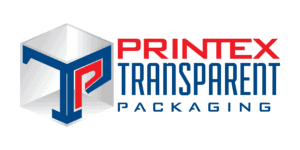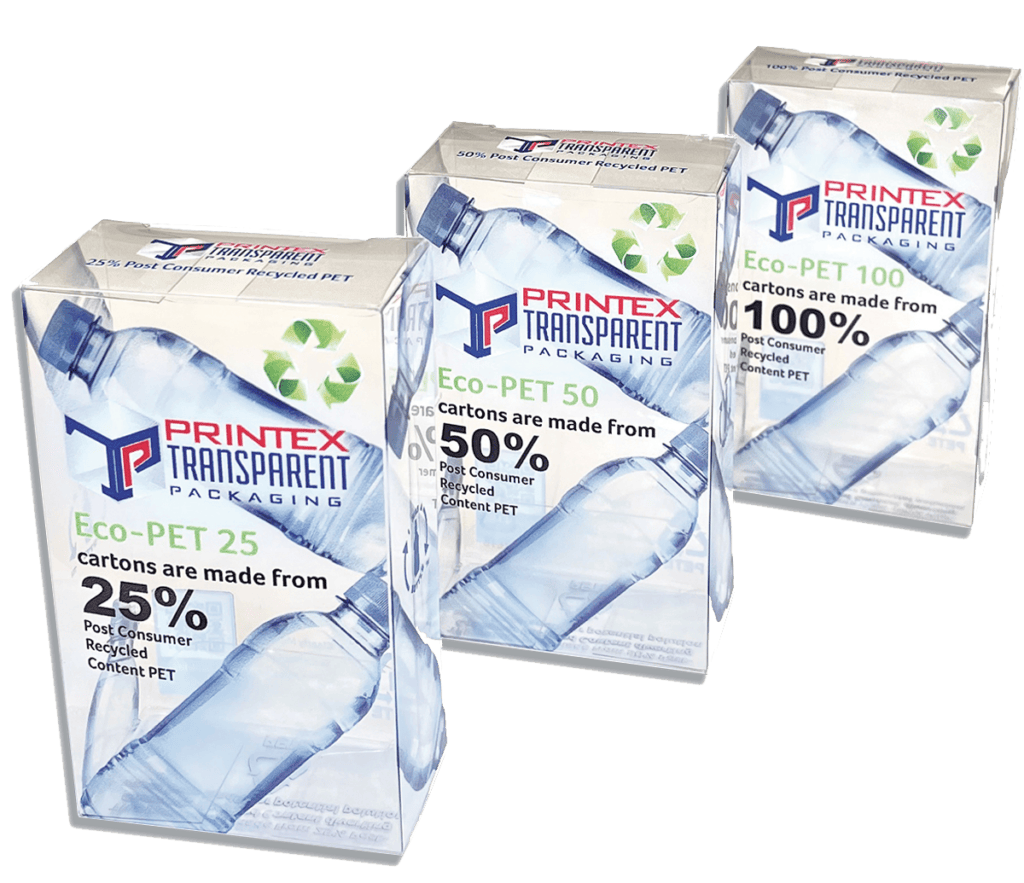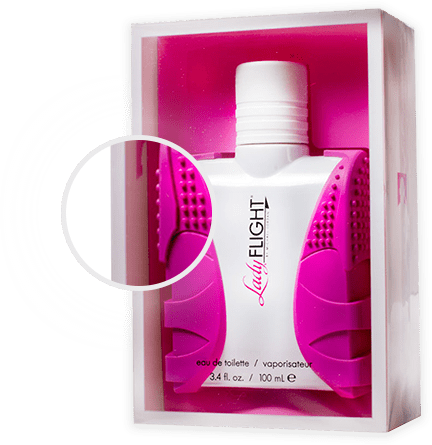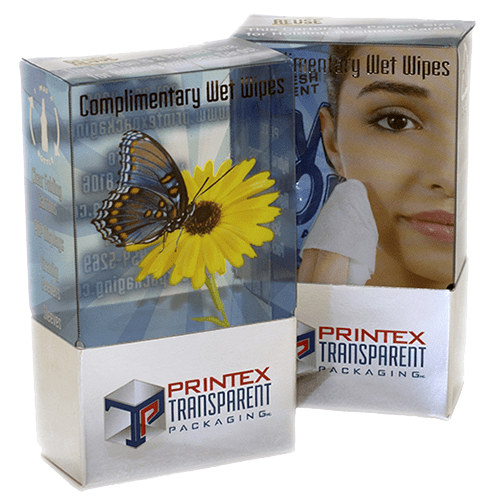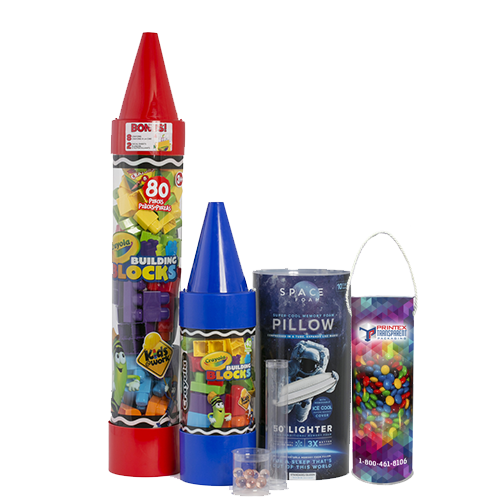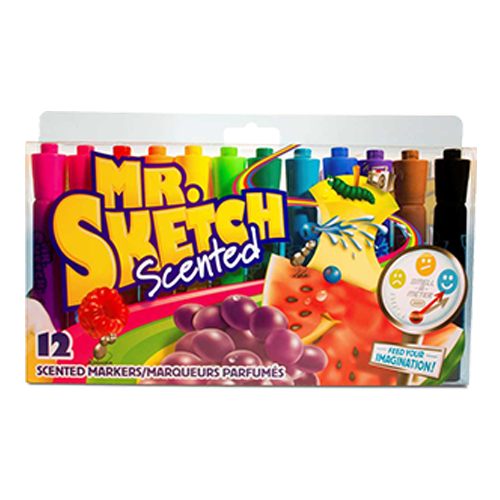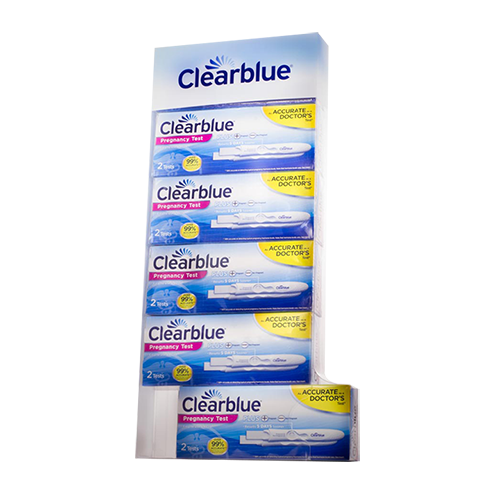PVC vs. PET Plastic Packaging
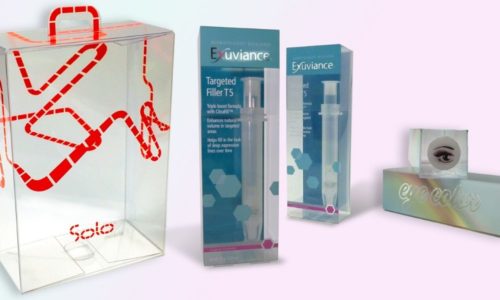 There are numerous plastic materials used to produce packaging, but polyvinyl chloride (PVC) and polyethylene terephthalate (PET) have become exceptionally popular for packaging solutions in recent years. Each type of plastic packaging has its own unique advantages and applications in various industries.
There are numerous plastic materials used to produce packaging, but polyvinyl chloride (PVC) and polyethylene terephthalate (PET) have become exceptionally popular for packaging solutions in recent years. Each type of plastic packaging has its own unique advantages and applications in various industries.
At Printex Transparent Packaging, we offer a variety of plastic packaging options for our customers and can assist in selecting the ideal material. This blog post provides an overview of PVC and PET plastics and offers a comparison of their characteristics, advantages, and disadvantages.
What Is PET Plastic?
PET is undeniably the most common thermoplastic resin of the polyester family due to a high-strength barrier that resists elements and outside tampering. PET is extensively used in the production of fiber for clothing and thermoforming for manufacturing. It is also widely used in the manufacture of containers for liquids and food items. PET is a strong and inert material that doesn’t react with food and beverages, making it ideal for packaging food items.
What Is PVC Plastic?
PVC is arguably one of the most commonly used plastic polymers after PET and polypropylene. PVC is a plastic made through a process known as suspension polymerization. This process produces hard, rigid structures that withstand harsh impacts and extreme temperatures. These properties make PVC useful in the manufacturing of cables, roofing materials, pipes and hoses, faux leather clothing, flooring applications, and commercial signage.
PET Plastic Packaging: Pros & Cons
Some of the advantages of PET for packaging include:
- PET is 100% recyclable and one of the most recycled plastics globally. This makes PET environmentally friendly and a sustainable product for packaging.
- PET has the ability to take on colorants very well and demonstrates excellent adherence qualities for external printing
- PET is safe for storing food.
- PET plastic boasts increased durability, this makes it suitable for almost all thermoformed packaging designs.
- PET plastic packaging is lightweight, transparent, and shatterproof. Though lightweight, PET is still strong enough to withstand outside elements for a myriad of applications.
- PET plastic offers more versatility because it can be thermoformed for a variety of applications
PET also has a few disadvantages:
- PET plastic has a lower heat resistance.
- PET plastic is partially derived from crude oils.
PVC Plastic Packaging: Pros & Cons
Here are some pros of PVC plastic packaging:
- PVC features excellent tensile strength and good resistance to chemicals and alkalis.
- PVC ranks well for hardness and durability.
- PVC boasts exceptional versatility, facilitating a multitude of shapes, designs, and product types.
- PVC is compatible with most shrink-wrap machinery.
PVC also has some drawbacks to consider:
- PVC emits hydrogen chloride when burned, which can pose health hazards.
- Most U.S. municipal authorities do not accept PVC in consumer recycling programs.
- Clear PVC often has a light blue tint compared with Clear PET which is virtually clear.
Plastic Packaging From Printex Transparent Packaging
PVC and PET are two types of plastic packaging used frequently in manufacturing. Although these two types of plastic may often appear identical to an untrained eye, several differences set them apart. If you need help choosing the best material for your specific application, don’t hesitate to contact Printex Transparent Packaging. We are committed to helping you select the ideal material for your needs and walk with you from initial conception and design through final delivery.
To see how our plastic packaging capabilities can benefit your operation, please contact us today or request a quote.

